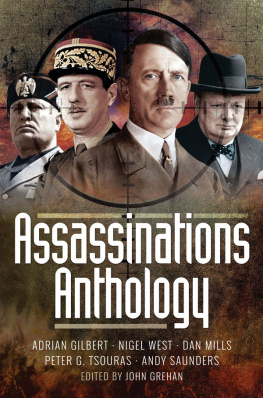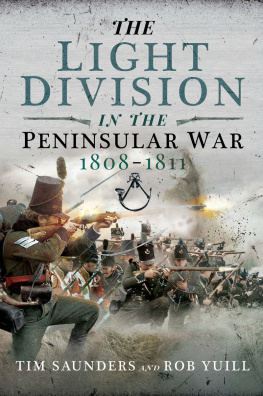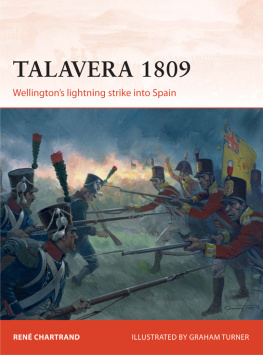THE NAPOLEONIC LIBRARY
Other books in the series include:
1815: THE RETURN OF NAPOLEON
Paul Britten Austin
ON THE FIELDS OF GLORY
The Battlefields of the 1815 Campaign
Andrew Uffindell and Michael Corum
LIFE IN NAPOLEONS ARMY
The Memoirs of Captain Elzar Blaze
Introduction by Philip Haythornthwaite
THE MEMOIRS OF BARON VON MFFLING
A Prussian Officer in the Napoleonic Wars
Baron von Mffling
WATERLOO LECTURES
A Study of the Campaign of 1815
Colonel Charles Chesney
WATERLOO LETTERS
A Collection of Accounts From Survivors of the Campaign of 1815
Edited by Major-General H. T. Siborne
www.frontline-books.com/napoleoniclibrary
THE LINES OF TORRES VEDRAS
The Cornerstone of Wellingtons Strategy in the Peninsular War 18091812
First published in 2000 by Spellmount.
This edition published in 2015 by Frontline Books,
an imprint of Pen & Sword Books Ltd,
47 Church Street, Barnsley, S. Yorkshire, S70 2AS
Copyright John Grehan, 2015
The right of John Grehan to be identified as the author of this work has been asserted by him in accordance with the Copyright, Designs and Patents Act 1988.
ISBN: 978-1-47385-274-7
PDF ISBN: 978-1-47385-277-8
EPUB ISBN: 978-1-47385-275-4
PRC ISBN: 978-1-47385-276-1
All rights reserved. No part of this publication may be reproduced, stored in or introduced into a retrieval system, or transmitted, in any form, or by any means (electronic, mechanical, photocopying, recording or otherwise) without the prior written permission of the publisher. Any person who does any unauthorized act in relation to this publication may be liable to criminal prosecution and civil claims for damages.
CIP data records for this title are available from the British Library
Printed and bound by CPI Group (UK) Ltd, Croydon, CR0 4YY
Typeset in 10.5/12.5 Palatino
For more information on our books, please email: , write to us at the above address, or visit:
www.frontline-books.com
Contents
List of Maps
Acknowledgements
This book could not have taken its present form without the assistance of many people and I would like to acknowledge the contribution that each of them has made. I must first thank Ian Fletcher for recommending the book for publication and for his accurate and constructive advice. For the translations of Kochs Memoirs de Massna and de LAins Vie Militaire du General Foy I am indebted to Jane Craufurd-Hoyle. Her unsolicited assistance and her frank assessment of my work proved to be utterly invaluable.
I must also express my gratitude to Colonel Jos Manuel Dos Santos Dias de Carvalho for allowing me personal access to the Busaco (or more accurately Buaco) Museum and to Antonio Manuel Raminhos Cordeiro Grilo for his translations of the Portuguese drill books and his frequent and informative correspondence. Clive Gilbert of the British Historical Society of Portugal granted me permission to quote from Norris and Bremners booklet on the Lines of Torres Vedras and he supplied me with other BHSP publications.
The Greenhill Books Napoleonic Library has reprinted many of the most important books of the Peninsular War period and I must thank Lionel Leventhal for allowing me to quote from Omans History of the Peninsular War, DUrbans Journal, Grattans Adventures and Simmons A British Rifleman.
No modern study of the Lines of Torres Vedras or Massnas Portuguese campaign could be written without reference to the published works of Professor Donald Horward. I am extremely grateful, therefore, for his permission to use his translation of Pelets French Campaign in Portugal, as well as to quote from Napoleon and Iberia and The Battle of Bussaco.
Ray Cusick provided me with much information and advice, particularly with regards to the telegraph systems used by the British and the Portuguese armies. Mary Kelly of the Library of the Queens University of Belfast provided me with details of Massnas Lopez map. Major Smallman, Secretary of the Royal Engineers Headquarters Mess, supplied the portrait of Colonel Fletcher and Caroline Theakstone of the Hulton Getty Picture Library located the Heath sketch of Torres Vedras. Karl Thompson read and amended the penultimate draft of the manuscript, the final version of which was edited by Lorraine McCann.
Dave Ryan and Richard Partridge of Partizan Press have promoted and supported me for many years. It is a fact that without their encouragement this book would not have been written.
Finally I must thank my wife, Lynne, for the many days that she trudged by my side along the steep slopes of the Serra de Montachique and for the many hours she spent checking my work.
John Grehan
Peacehaven, 2000
Introduction
The sure game
T he importance of the Lines of Torres Vedras, and their pivotal role in Wellingtons strategical plans throughout the central years of the Peninsular War, has largely been unappreciated by historians. Though many hundreds of books have been written about the Peninsular War only two slim monographs on the Lines of Torres Vedras have ever been published in English. The first of these, Memoranda Relative to the Lines thrown up to cover Lisbon in 1810, was written by Captain, later Major-General, John Jones RE who was the engineer responsible for the construction of the Lines under Wellingtons Commanding Engineer, Colonel Fletcher. First published in its entirety in 1829 this pamphlet was later incorporated into the 1846 edition of Jones Journal of Sieges carried on by the army under the Duke of Wellington, forming the final volume of that work. The second, published 134 years later by the British Historical Society of Portugal, is a guidebook to the present-day remains of the Lines, with a patchwork of additional information. In the majority of the other Peninsular War books produced over the last two centuries the Lines are only referred to immediately before and during the few weeks in 1810 when the redoubts were actually occupied by the allied troops. Their conception rarely constitutes more than a paragraph or two; their construction even less.
One of the reasons why so few words have been written about the Lines is that they were never assaulted. There was no heroic struggle for possession of the Lines to stir the pens of the Peninsula diarists or to fire the imaginations of later authors. The building of a chain of earthen redoubts has to compete with the great battles and sieges of the Peninsular War, and it inevitably loses.
The other reason is the failure of some historians to grasp the fundamentals of warfare in the Iberian Peninsula in the early nineteenth century. It is clearly believed by many that Wellington achieved his eventual victory primarily by his successes on the battlefield. However, as Basil Liddel Hart who was a soldier first and an historian second declared in The Strategy of the Indirect Approach, Wellingtons battles and sieges were perhaps the least effective part of his operations.
Wellington committed his army to battle only with the greatest reluctance. Depend upon it, whatever people may tell you, he once told the Earl of Liverpool, I am not so desirous as they imagine of fighting desperate battles; if I was, I might fight one any day I please. It was not simply by fighting battles that Wellington succeeded in the Peninsula. In fact only 50,000 French soldiers were killed or captured fighting the British whereas disease, starvation and the actions of the guerrillas and the regular Spanish armies resulted in approximately 180,000 French casualties. The battles that Wellington did fight were the consequence, not the object, of his strategy.

















